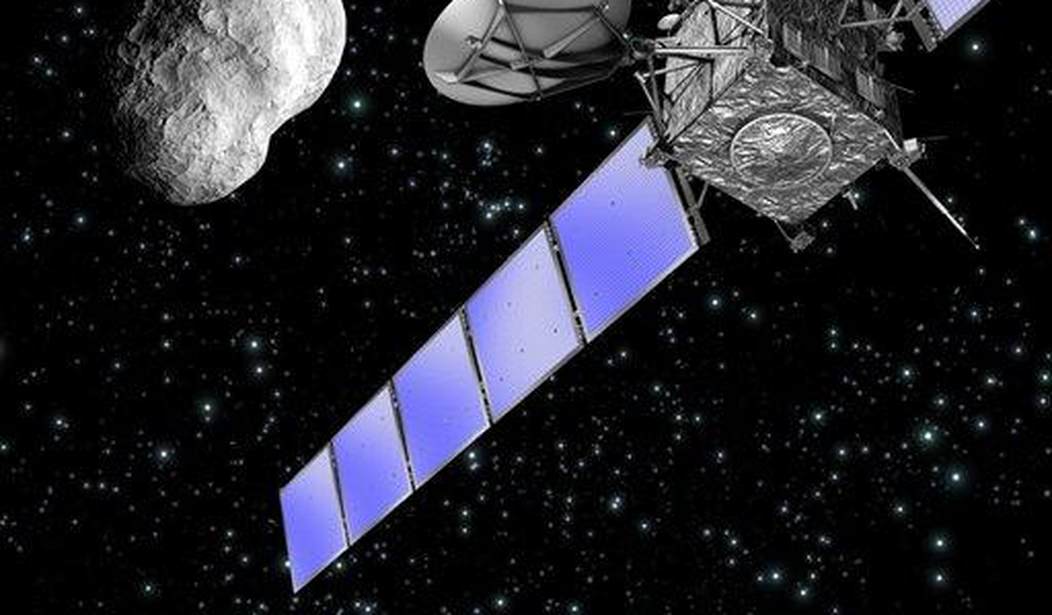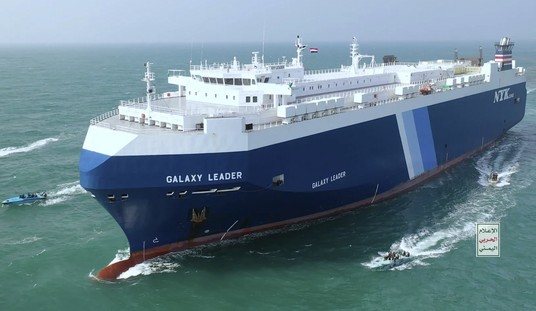No, this isn’t a movie — no need to cue Aerosmith with the theme song from Armageddon. It’s not an existential threat to Earth. It is, however, NASA doing something rather cool.
Monday evening, shortly after 7:00 pm Eastern, NASA is set to crash a spacecraft into an asteroid:
NASA’s Double Asteroid Redirection Test (DART) spacecraft is hurtling toward the asteroid Didymos and its moonlet Dimorphos, and it’ll reach its target tonight (Sept. 26). At 7:14 p.m. EDT (2314 GMT), if all goes well, DART will crash into Dimorphos in an attempt to alter the moonlet’s trajectory. The mission is meant to test the theory that this technique could be used to divert an asteroid heading straight for Earth.
While neither Dimorphos nor Didymos pose a threat to our planet, and nothing that happens today can change that, the results of the DART mission will provide crucial data for scientists and engineers to develop plans for planetary defense. DART, which is managed for NASA by Johns Hopkins University Applied Physics Laboratory (JHUAPL), marks the first-ever planetary defense test. You can watch the DART asteroid impact live online, courtesy of NASA, beginning at 6 p.m. EDT (2200 GMT).
The collision is set to occur roughly seven million miles away from Earth. It’s taken the spacecraft nearly a year to reach its destination.
DART launched atop a SpaceX Falcon 9 rocket on Nov. 23, 2021, and has since been traveling the 7 million miles (11 million kilometers) to Didymos and Dimorphos.
As DART approaches Dimorphos, it will use its sole instrument, the Didymos Reconnaissance and Asteroid Camera for Optical navigation (DRACO), to autonomously navigate to its impact zone. Considering that scientists estimate Dimorphos has a diameter of just 560 feet (170 meters), that’s no easy task.
Though this mission involves crashing a spacecraft into the asteroid rather than attempting to land on and mine it with explosives, it remains a daunting task.
“Dimorphos is a tiny asteroid,” Tom Statler, the mission’s program scientist at NASA, said during the news conference. “We’ve never seen it up close, we don’t know what it looks like, we don’t know what the shape is. And that’s just one of the things that leads to the technical challenges of DART. Hitting an asteroid is a tough thing to do.”
For context, Elena Adams, DART mission systems engineer at JHUAPL, said that DRACO won’t even spot Dimorphos until about an hour before impact, at which point it’ll be just one pixel in DRACO’s field of view. “At three minutes prior to impact, two minutes prior to impact, it is 42 pixels in size,” Adams said during the news conference.
Per CBS News:
The job of the real-life Bruce Willis, NASA’s planetary defense officer Lindley Johnson, is finding asteroids in our solar system before they find us.
More than 27,000 near-Earth asteroids have been identified so far. About 10,000 of them look large enough to cause damage if they struck Earth.
Correspondent Mark Strassmann asked, “As it now stands, how vulnerable is the Earth to one of these objects?”
“To a large object, there is currently nothing to stop it,” Johnson replied.
Thankfully, it appears we have a little time to develop a response strategy.
No known asteroid of size threatens Earth for at least the next hundred years – a good thing: no one knows whether DART will work.
One hopes!













Join the conversation as a VIP Member